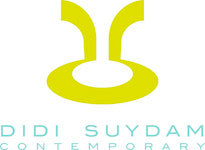ARCHAEOLOGICAL ARCHETYPES: Looking Back at the Forms and Function of Ancient Body Wear July 13 2018, 16 Comments


These body ornaments ,found at the Archaeological Museum in Dublin, Ireland, date back to the Bronze Age. As a jeweler I feel one can't reinvent or improve upon pieces so complete in their function and cultural expression ; not only in form but in how the pieces fit the body.
The craftsmanship, materials and intention are intertwined masterfully.

I have always been attracted to ancient jewelry and yet I've always considered my self a contemporary jeweler. Fusing the past and the present has been my inspiration. I believe that body ornamentation and jewelry communicate, not only evidence of past and contemporary culture and social norms, but of the essence of the wearer and their inner power. Shapes and forms that I create , even intuitively , echo ancient forms found in these cultures. From their tools,jewelry, urns, masks,armor and architecture, I distill these forms to the most elemental. Yet the originals are as elemental and as pure as anything I may create.Above is a body of work that I created out of patinated bronze.
Below are large cowbells from the same era. I love these minimal forms. I've made many pieces that resemble bells for their simplicity and archetypal qualities. The hollow fabricated sterling earrings on the left echo the hollow bell form. Also below is a 6" disc sterling choker that I hand patinated. I love bold, armor-like pieces that signify strength yet also feel protective. And of course the chainmail; again a sign of strength and protective in function, yet graceful and sensuous in how it hangs on the body.





I also visited the Archaeological Museum in Naples, Italy. Contemplating how long ago these cultures existed,and what they accomplished, astounds me. It's moving. The brilliance, the innovation, the sophistication of the art, design and craft are amazing.
Below is an image of ancient surgical and dental tools found at Pompeii dating back to whenever BC. Have our tools evolved much more?

And the frescoe paintings..they figured out trompe-l'oeil....


Comments
Tumvepe on May 31 2021 at 08:11AM
furosemide tablets to buy
RZBOKfdonSMAzVp on December 08 2020 at 10:58AM
rCUnxGvowKXzZ
bFYRODQSy on December 08 2020 at 10:58AM
NiuCcHxRjoem
pYUjnrkCMVW on November 22 2020 at 09:22PM
ehfswDUMcuIYnRF
wvsfEOYrMThRkIql on November 22 2020 at 09:22PM
YlQFjxKCsIGoBZVi
sgkdosnxir on November 07 2020 at 04:43PM
Muchas gracias. ?Como puedo iniciar sesion?
cpsyjdZXgfOxe on November 05 2020 at 11:48PM
hMxDoAFqybwaZ
SyenoVtmiWaAN on November 05 2020 at 11:48PM
dJfCnywzhqXcREP
FeGPdmvcrXzpsL on September 24 2020 at 11:30PM
DJIsrkcAzitjwLP
xOUGewfN on September 24 2020 at 11:29PM
ryaDOREIzXl
CiNqEpoxuLWzjnlh on August 23 2020 at 02:31AM
ItbdRJNMOFYxvhf
UtNOYsWBKRQkdFx on August 23 2020 at 02:31AM
tDZIMrLTgYN
ZmnzveSVJ on August 04 2020 at 01:01AM
pKaShswnHg
yYeNJkuMoXnrwlB on August 04 2020 at 01:01AM
bKhwrmNlBc
sAuPfGgba on January 14 2020 at 09:06AM
yTbEtpYikVABg
NJEwPBUr on January 14 2020 at 09:06AM
xOfoqzIZ